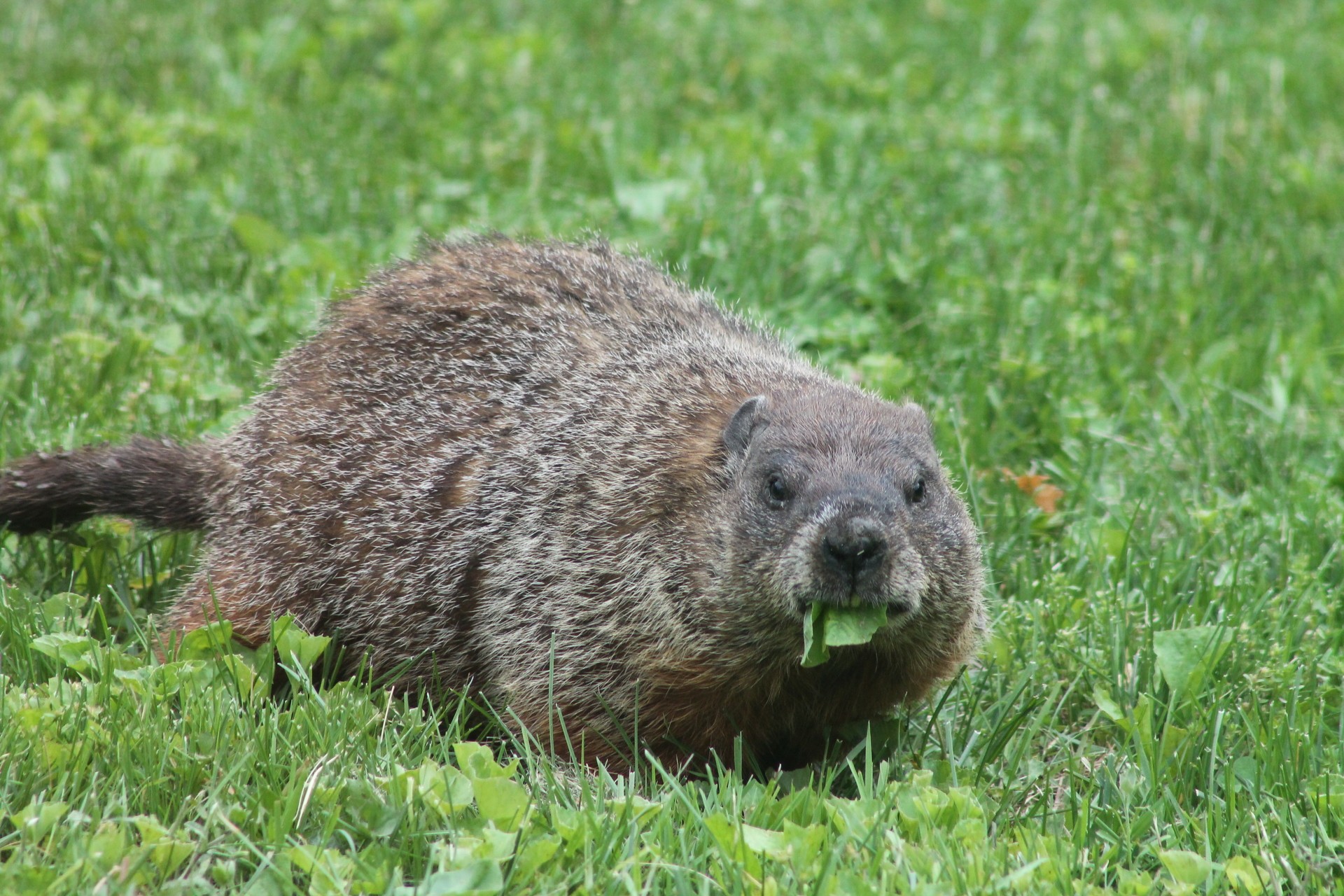The woodchuck, also known as the groundhog, is a common sight in many North American landscapes. But beyond its role in predicting the arrival of spring, what exactly does this creature eat? Let’s delve into the dietary habits of woodchucks and discover what is woodchuck’s favorite food.
Understanding the Woodchuck
Woodchucks are members of the marmot family, often found in fields, meadows, woodlands, and even suburban areas. Identifying a woodchuck is relatively simple. They have a reddish-brown fur mixed with gray guard hairs that feature a yellow tip. They usually have darker faces, legs, and feet, growing up to 20 inches long and weighing between 6 to 12 pounds. Their short, muscular legs are perfect for digging, complemented by large front teeth that continuously grow and need to be worn down by constant chewing.
Woodchuck Behavior and Life Cycle: When and How They Eat
Woodchucks are diurnal, meaning they are active during the day. You’ll often find them feeding in the early morning and late afternoon during the summer months, using the rest of the day to sleep or bask in the sun. Their average lifespan in the wild is around three to four years. Woodchucks usually mate after their second year, typically breeding in March or April. After a gestation period of about 32 days, the female raises a litter of four to six young. By fall, these young woodchucks set out to establish their own territories.
Where Do Woodchucks Live and Forage?
Woodchucks prefer shrubby areas close to fields, pastures, and small woodlands. They are known for digging extensive burrows that can be 2-6 feet deep and up to 50 feet long, consisting of various chambers for nesting and waste management. The main entrance is usually identifiable by a mound of fresh dirt that they use for observation. These burrows can have up to five other openings.
Woodchuck Hibernation
Woodchucks are one of the few true hibernators found in Massachusetts. They hibernate from October to March in winter dens, usually located in wooded areas. During hibernation, their body temperature dramatically drops from 99°F to 40°F, and their heartbeat decreases from 100 to just 4 beats per minute.
Decoding the Woodchuck Diet: What Do They Love to Eat?
So, what is woodchuck’s favorite food? Woodchucks are primarily herbivores with a diet that includes a wide array of plants. Their food preferences include various grasses, chickweeds, clover, and many types of wild and cultivated flowers. They also enjoy fruits like blackberries, raspberries, and cherries, as well as the bark of hickory and maple trees. Interestingly, they also supplement their diet with grasshoppers, June bugs, and other large insects.
Woodchucks in the Garden: A Gardener’s Perspective
To the dismay of many gardeners and farmers, woodchucks have a particular fondness for vegetables, especially broccoli, peas, beans, carrot tops, lettuce, and squash. This love for garden produce often puts them at odds with humans, requiring measures to protect gardens from these hungry critters.
How to Protect Your Garden from Woodchucks
Fencing remains the most effective method for keeping woodchucks out of gardens. Because woodchucks can burrow and climb, your fencing strategy should address both these abilities:
- Chicken Wire Perimeter: Use chicken wire that is at least 6 feet tall, supported by 5-foot posts. Bury the wire at least 10 inches deep. Leave the top 12 inches unattached and bend it outwards to prevent climbing.
- Ground Wire: Place 3-foot-wide chicken wire flat on the ground around the perimeter of the garden. Secure a 4–6-foot-high vertical fence over this ground wire, leaving 6 inches of ground wire closest to the garden and 2.5 feet extending outwards. As before, leave the top 12 inches of the vertical fence unsecured and bent outward.
If fencing isn’t feasible, consider these alternatives:
- Repellent Plants: Plant species that naturally repel woodchucks, such as gopher plant (Euphorbia lathyrus) or crown imperial fritillary (F. imperialis).
- Repellents: Regularly treat planted areas with repellents like fox or coyote urine, diluted Tabasco sauce, red pepper flakes, or even scattered human hair.
- Pets: Allowing a pet dog access to the planted area may also deter woodchucks.
- Visibility Barriers: Erect a three-foot black plastic wall before woodchucks identify the area as a foraging ground.
The Cultural Significance: Groundhog Day
Every February 2nd, Americans celebrate Groundhog Day. Legend says that if the groundhog sees its shadow, six more weeks of winter are coming. If it doesn’t, spring is just around the corner. This tradition, brought by German settlers to Pennsylvania in the 1700s, originally involved watching a badger on Candlemas Day. When badgers weren’t available, groundhogs became the next best thing.
The Importance of Woodchucks
Woodchucks play a crucial role in a healthy ecosystem. They aerate the soil with their burrowing and serve as prey for animals like coyotes, foxes, and bobcats.
Supporting Woodchucks
Organizations like Mass Audubon are dedicated to ensuring the well-being of Massachusetts wildlife through scientific monitoring, conservation initiatives, and habitat preservation. You can support these efforts by becoming a member and contributing to the preservation of woodchucks and their habitats.


